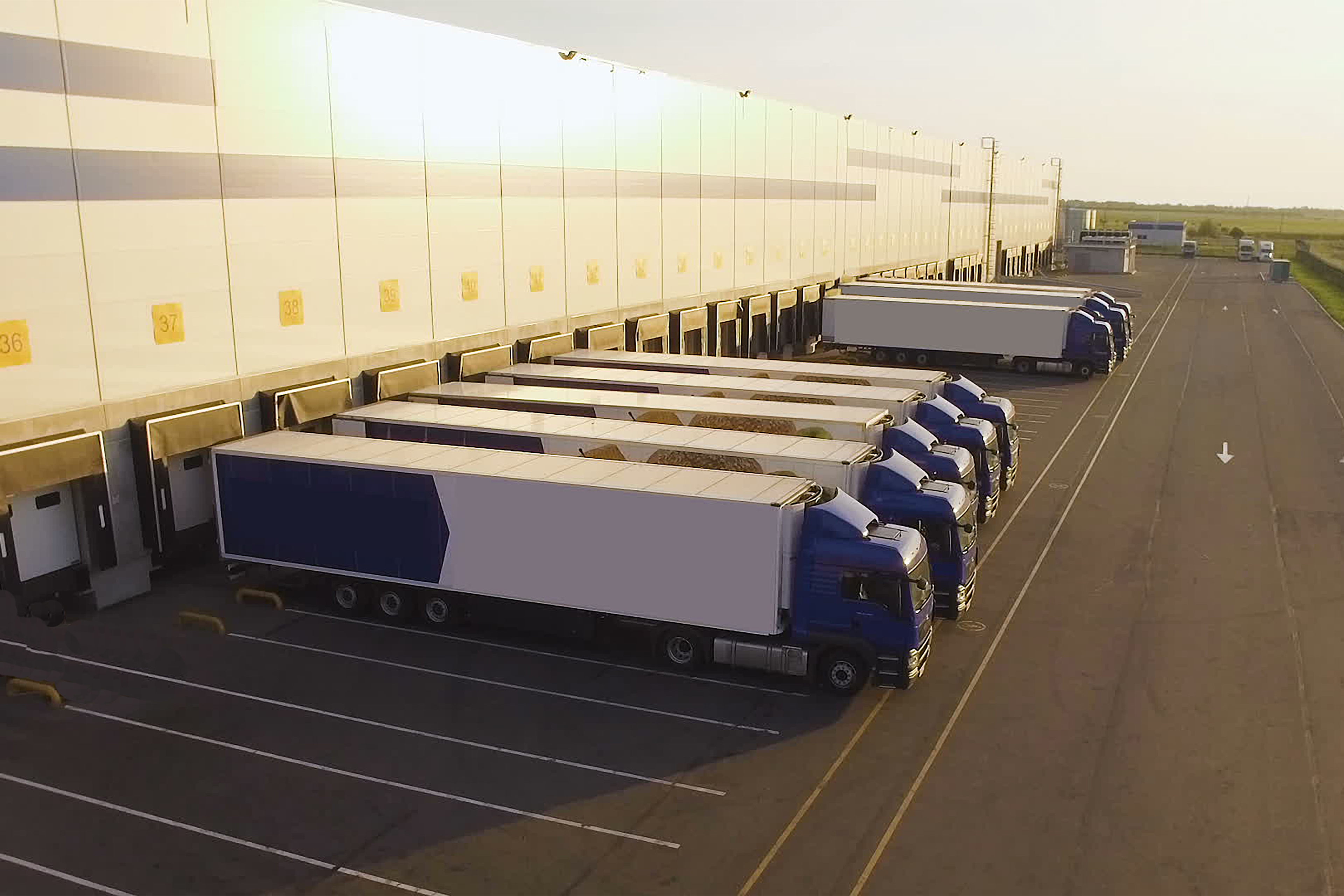The industrials sector is the backbone of the economy. It performs three main functions:
- Manufacturing and distributing capital goods: This includes building products and machinery, as well as providing construction and engineering services.
- Providing commercial and professional services: This includes environmental and facility services, along with human resources and employment services.
- Providing transportation services: This includes operating an airline or railway.

What are industrial stocks?
Industrial companies operate in several subsectors of the economy, providing products and services related to:
- Aerospace and defense.
- Air freight and logistics.
- Commercial and professional services and supplies.
- Industrial machinery and electrical equipment.
- Construction equipment and building supplies.
- Transportation, including cars, airlines, and railways.
- Waste management.
The industrial industry is one of three economic segments. It's also known as the secondary sector. The other two economic segments are the primary sector, encompassing agriculture, fishing, and mining, and the service sector, which includes hospitality, consultancy, and nursing.
Best industrial stocks to buy in 2025
These industrial stocks are some of the sector’s most durable long-term investments:
| Name and ticker | Market cap | Dividend yield | Industry |
|---|---|---|---|
| WM (NYSE:WM) | $87.8 billion | 1.48% | Commercial Services and Supplies |
| FedEx (NYSE:FDX) | $65.0 billion | 2.05% | Air Freight and Logistics |
| Ge Vernova (NYSE:GEV) | $162.7 billion | 0.13% | Electrical Equipment |
| Lockheed Martin (NYSE:LMT) | $105.9 billion | 2.88% | Aerospace and Defense |
| Caterpillar (NYSE:CAT) | $269.4 billion | 1.01% | Machinery |
1. Waste Management

NYSE: WM
Key Data Points
2. FedEx

NYSE: FDX
Key Data Points
FedEx (FDX -0.05%) provides customers with transportation, e-commerce, and business services. The company operates a fleet of aircraft and vehicles, logistics facilities, and retail stores that help facilitate the shipment of millions of packages daily. It also offers a host of other logistics and e-commerce services that help businesses distribute their products to customers.
E-commerce
FedEx produces lots of free cash flow, which allows the company to pay a competitive and growing dividend. It can also repay debt to strengthen its balance sheet and make investments to expand its operations.
FedEx’s strong cash flow also enables the company to invest in innovation. The shipping company is testing autonomous vehicles and delivery services. Meanwhile, the company bought RouteSmart Technologies in 2025 to help further optimize delivery.
The company announced plans in 2025 to separate its FedEx Freight operations by creating a new publicly traded company. FedEx hopes to complete the separation within 18 months. The transaction will create two leading industrial companies and should unlock value for shareholders.
3. Lockheed Martin

NYSE: LMT
Key Data Points
Lockheed Martin (LMT +0.81%) is a leading global security and aerospace company. It researches, designs, develops, and manufactures advanced technology systems, products, and services, primarily for government customers. The defense contractor has four main business segments: aeronautics, missiles and fire control, rotary and mission systems, and space.
The company invests billions of dollars annually on research and development (R&D) to advance the latest defense technology. It routinely complements its internal R&D program with acquisitions. In late 2024, the company acquired Terran Orbital to enhance its space capabilities. It also bought Amentum's Rapid Solutions business in 2025 to enhance its ability to deliver innovative defense technology.
The defense contractor should continue growing in the coming years. Recent wars in Ukraine and the Middle East have increased global defense spending. That trend will likely continue as geopolitical tensions remain high.
Lockheed Martin also has an excellent record of returning cash to shareholders through dividends and repurchases. In late 2025, it delivered its 23rd annual dividend increase, while boosting its share repurchase authorization by $2 billion to boost its available remaining capacity to $9.1 billion.
4. Caterpillar

NYSE: CAT
Key Data Points
Caterpillar (CAT +0.35%) is a leading global manufacturer of construction and mining equipment, off-highway diesel and natural gas engines, industrial gas turbines, and diesel-electric locomotives. The company has three operating segments: construction industries, resource industries, and energy and transportation. It also provides financing and related services.
Caterpillar is working toward making more sustainable equipment. It’s collaborating with companies in the rail, energy, mining, and technology sectors on developing new technologies with lower carbon emissions. For example, it’s working on both battery- and hydrogen-powered locomotives. It’s also developing zero-emission haul trucks and equipment for the mining industry. The focus on sustainability will be a major growth driver for Caterpillar in the coming years as the global economy continues to make progress on reducing carbon emissions.
Another major growth driver for Caterpillar is the increasing investment in infrastructure in the coming years. The U.S. is one of many countries that have boosted their spending on projects to maintain and expand highway and rail systems, bridges, and other infrastructure. The increased spending should drive more demand for construction equipment.
The company has continued to reward shareholders throughout economic cycles. It has raised its dividend for 32 consecutive years.
5. GE Vernova

NYSE: GEV
Key Data Points
GE Vernova (GEV +1.70%) is an energy equipment manufacturing and services company. It formed in 2024 after the once-mighty industrial giant GE completed its breakup. GE Vernova is the former GE Power and GE Renewable Energy businesses.
The company has three business segments:
- Power: It provides electricity generation solutions, like natural gas turbines, to customers to produce power.
- Wind: The company is a leader in producing wind turbines and other components to produce wind energy.
- Electrification: It developed solutions to help modernize and digitize the electric grid.
GE Vernova's products currently produce about 25% of the world's electricity. It manufactures turbines (natural gas and wind), positioning it to grow as demand for lower-carbon energy rises. It also services its turbines for customers, providing the company with a very stable cash flow.
How to identify the best industrial companies
The strongest industrial companies have diversified operations, low operating costs, and investment-grade credit ratings. Diversification, a low cost structure, and access to affordable debt are important because of the cyclicality of the industrials sector. Economic downturns directly reduce the demand for industrial goods and services.
Industrial companies also need access to affordable debt because their operations are often very capital-intensive. Most industrial companies need to borrow money to buy new capital equipment and build new manufacturing facilities. Another benefit of a low-cost structure is less exposure to rising cost pressures in inflationary environments.
While a company's financial performance is always relevant for investors, companies in the industrial sector need to maintain particularly strong financial positions. Prospective investors should pay close attention to how specific industrial companies fare in times of crisis.
Related investing topics
Should you buy industrial company stocks?
Before buying industrial stocks, you need to consider a couple of crucial factors about these companies:
- Cyclicality increases risk: The industrial sector's cyclical nature makes industrial company stocks better suited for risk-tolerant investors. As we’ve seen many times over the years, economic conditions can significantly change almost overnight. When the economy experiences a recession, cyclical stocks tend to experience the brunt of the impact.
- Booming return potential during an expansion: Industrial company stocks tend to thrive during economic expansions, typically generating impressive returns for investors during these periods. Investors who are comfortable with volatility can often earn strong returns by purchasing shares of high-quality industrial companies in the early stages of an economic recovery from a recession.
How to buy industrial stocks?
Anyone can buy industrial stocks. Here's a step-by-step guide on how to add one to your portfolio:
- Open your brokerage app: Log in to your brokerage account where you handle your investments.
- Search for the stock: Enter the ticker or company name into the search bar to bring up the stock's trading page.
- Decide how many shares to buy: Consider your investment goals and how much of your portfolio you want to allocate to this stock.
- Select order type: Choose between a market order to buy at the current price or a limit order to specify the maximum price you're willing to pay.
- Submit your order: Confirm the details and submit your buy order.
- Review your purchase: Check your portfolio to ensure your order was filled as expected and adjust your investment strategy accordingly.






